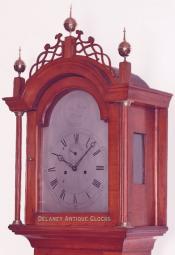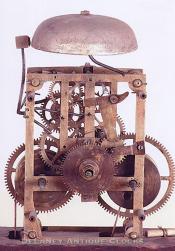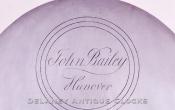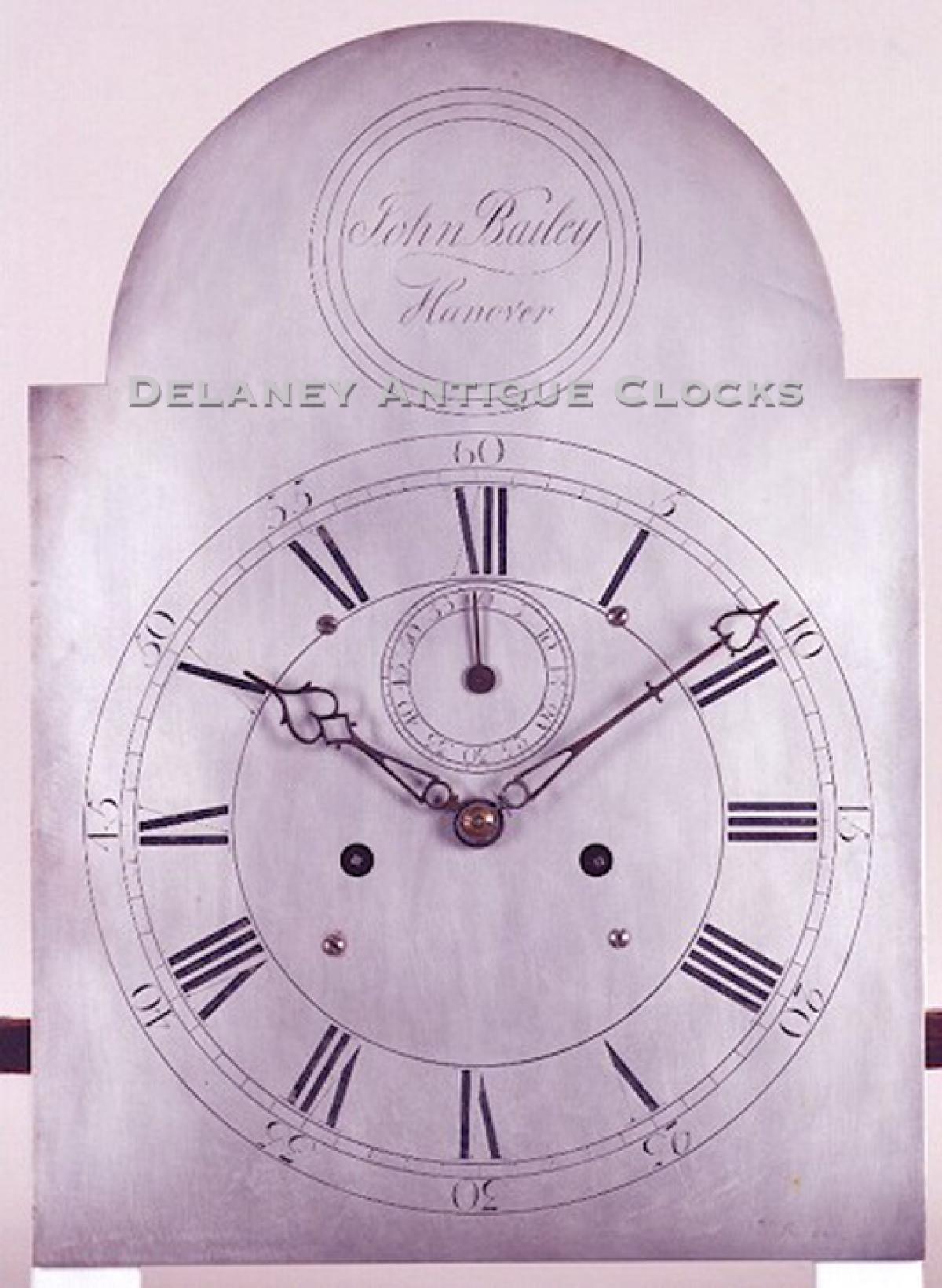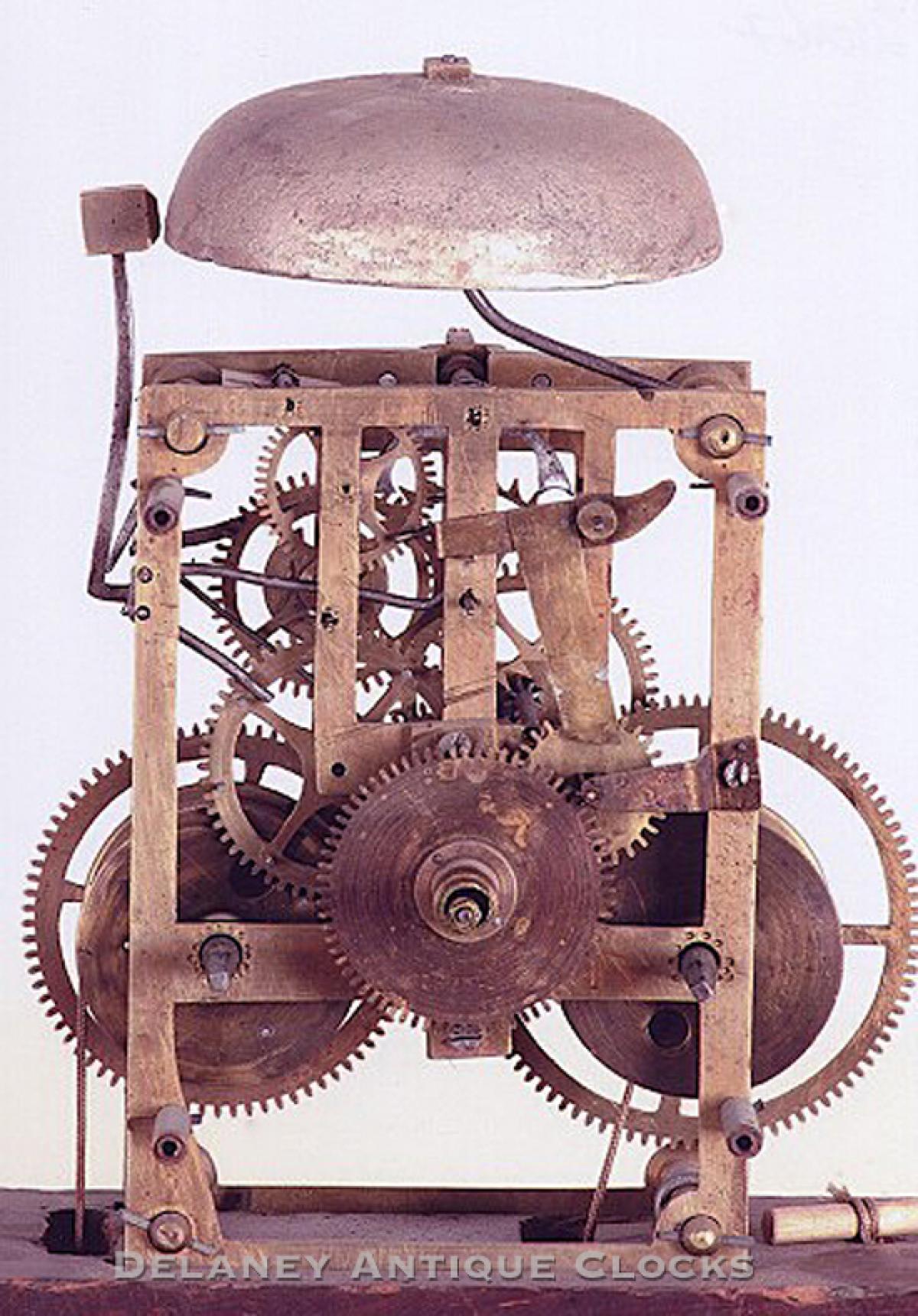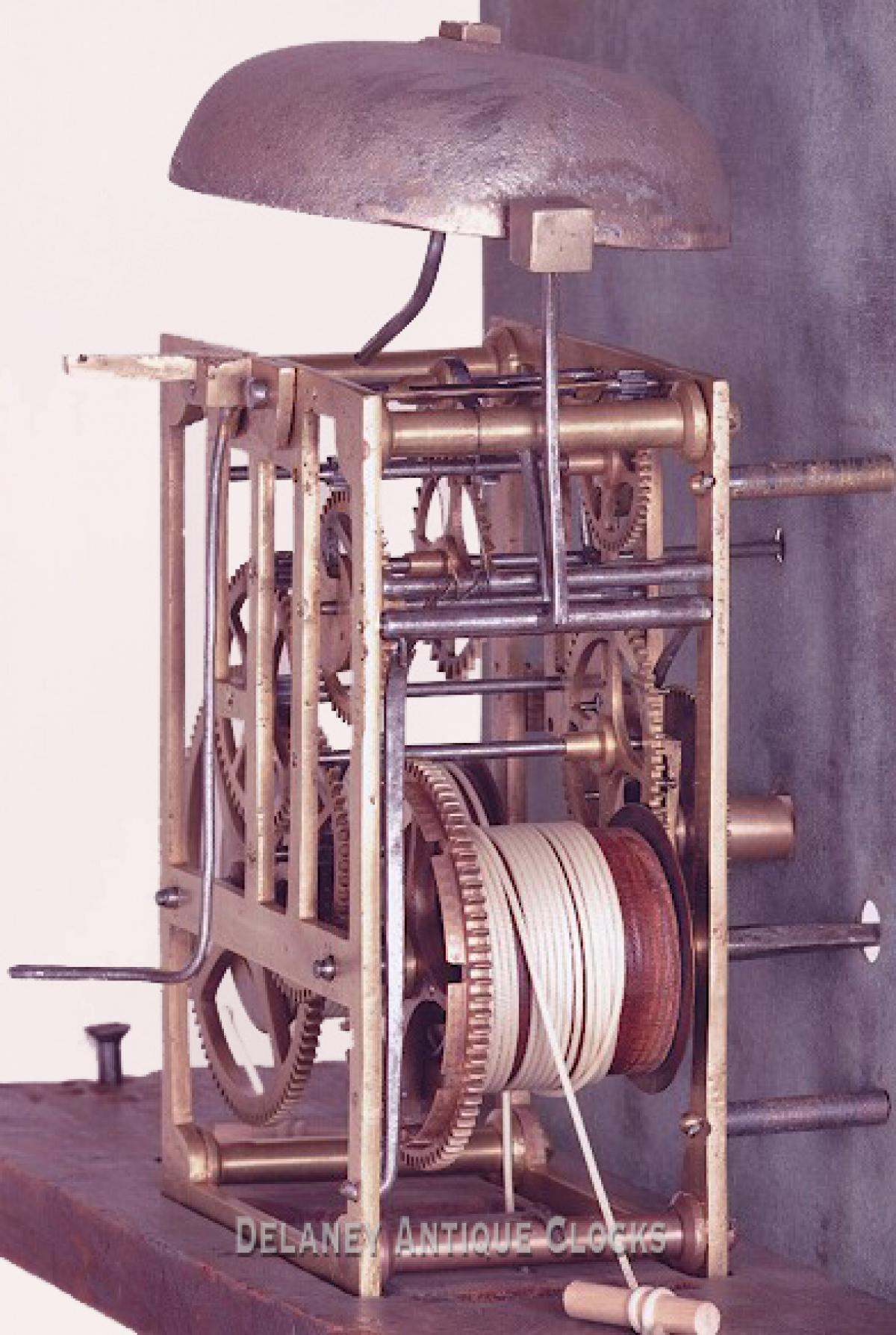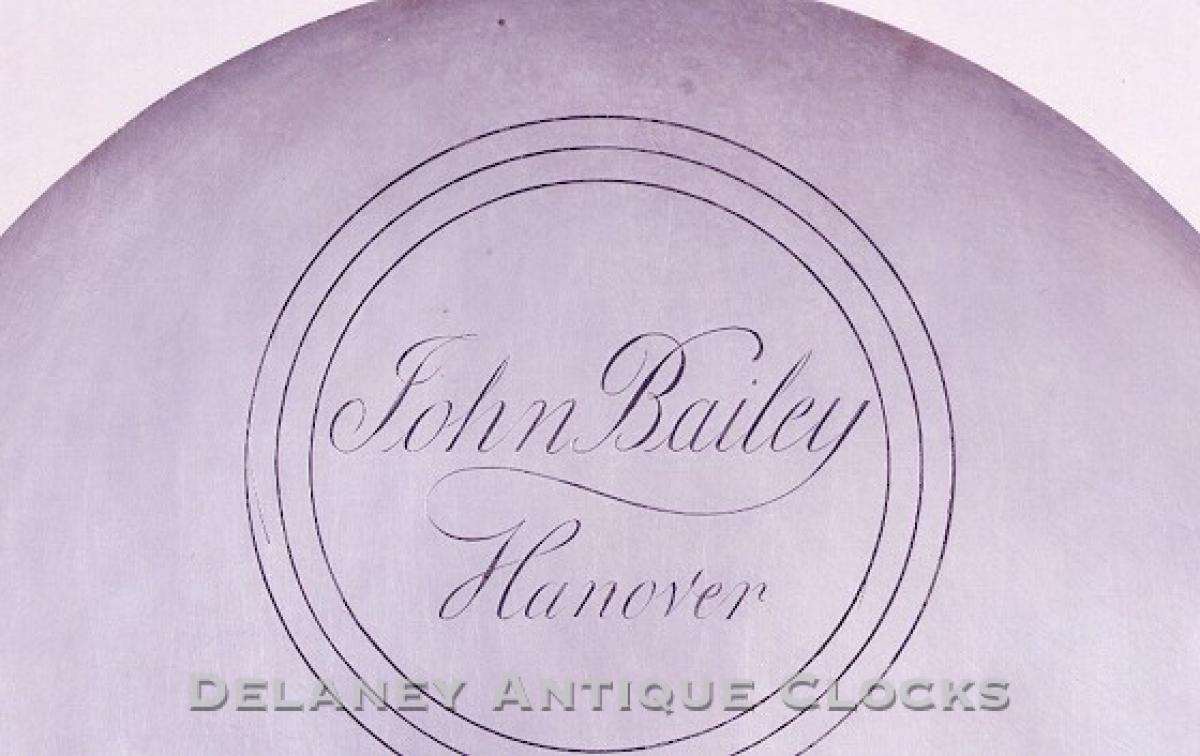John Bailey II of Hanover, Massachusetts. A maple case tall clock. 211067.
This country maple case tall clock was made by John Bailey II of Hanover of Massachusetts.
John Bailey II was born the son of John and Ruth Randall Bailey on May 6th, 1751. He learned clockmaking at a very young age is responsible for training numerous apprentices such as his younger brothers Calvin and Lebbeus as well as Joshua Wilder, his son John III, Joseph Gooding, Ezra Kelley and Hingham’s Joshua Wilder. He was the most prolific of the six Baileys that were involved in the clock business. John was a Quaker. Over the years, we have owned a fair number of clocks made by him. Some of which included numerous tall case clocks, dwarf clocks and the Massachusetts shelf clock form.
This long case example exhibits excellent Southeastern Massachusetts proportions. The case wood is maple and features an older mellow honey colored finish. It is quite pleasing. The secondary wood is New England white pine. It is interesting to note that this example bears the inscription for the originally owner who appears to have been a Lieutenant. Unfortunately, the name is not legible.
This case stands on applied bracket feet. The center of this molding features a simple drop pendant. The waist door is a rectangular shape and trimmed with a molded edge around its perimeter. Through this door one can access the two weights and brass faced pendulum bob. The bonnet door is arched and fitted with glass. It is flanked by fully turned and fluted bonnet columns. These are mounted in brass capitals. The bonnet features a traditional New England Style lacy fret work pattern that is supported by three fluted chimney plinths. Each of these fluted plinths is surmounted with a brass ball and spiked finial.
The simply engraved brass dial has been silvered. The time ring, featuring large Roman numeral hour markers, smaller Arabic five minute markers , subsidiary seconds dial and an engraved name boss are filled with wax. The wax is black and contrasts nicely with the silver finish of the dial. The Maker’s signature and working location are engraved in the arch of the dial. It reads, “John Bailey \/ Hanover” in a script format. It is interesting to note that the spandrel areas are not decorated with engravings.
The movement is brass and designed to run eight days on a full wind. It is powered by two weights that descend inside the case behind the waist door. This movement is also designed to strike each hour via a countwheel striking system. It will strike each hour on a bell. The bell is mounted above the movement inside the case. The plates have been skeletonized. The winding drums are wood. This movement is good quality.
This clock was made circa 1795. This wonderful simple case stands approximately 7 feet 11 inches tall to the top of the center finial.
This clock is inventory number 211067.
John Bailey II was born on May 6, 1751, in Hanover, Massachusetts, the son of Colonel John Bailey, a shipbuilder, and Ruth Randall Bailey. He died there 72 years later, in 1823. It is believed he learned clockmaking at a young age and may have been self-taught. John t on January 23, rained numerous apprentices, including his younger brothers Calvin and Lebbeus, his son John III, Joseph Gooding, Ezra Kelley, and Joshua Wilder from Hingham. Many of his apprentices moved to other towns in southeastern Massachusetts and became well-known in their communities. John was the most prolific clockmaker among the six Baileys involved in the craft.
John's clocks can be categorized into two main types. The first is a home-developed style, which often features sheet brass dials that are engraved and treated with a silver wash. Several examples we know of have movements constructed from wood, while others are made of brass with fully skeletonized plates. Some later models incorporate wooden winding drums. Notably, he produced both types of strike trains; we have seen signed examples that feature a count wheel setup and the more common rack and snail configuration. Very few clockmakers used both setups. The cases are usually made from indigenous woods like maple and cherry, showcasing pleasing country proportions without the sophistication of the Roxbury School. The 'Roxbury/Boston influence' refers to the design and craftsmanship styles that were popular in these areas at the time. Around 1790, this influence likely played a significant role in John's production. The movements in these examples more commonly feature fully plated mechanisms. Additionally, the cases resemble those produced by the Willard School to the north, which often showcase mahogany cases decorated with inlays. This second generation of output appears much more formal.
Over the years, our collection has included a diverse range of clocks crafted by John Bailey II. From tall-case clocks to dwarf clocks, banjo or wall timepieces, and the unique Massachusetts shelf clock form, his versatility as a clockmaker is truly intriguing.



